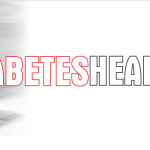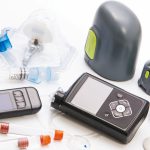BMD-DEXA stands for Bone Mineral Density – Dual Xray Absorptiometry. It is used to ascertain the density and strength of bones. It is a non-invasive test lasting around 10-15 minutes. The patient is not inconvenienced during the test. No prior preparation is needed for the test. The patient has to lie down on the machine while it conducts a head to toe scan.
The test is evaluated by comparing the bone density of the patient with that of a healthy 30-year-old male. It is denoted by T-score, which is a standard deviation from the mean, which is an average healthy
30- year old male. So if the bone quality of the patient is exactly like that of an average healthy 30-year old male, the T-score would be 0.
A T-score of +1.0 to -1.0 is considered to be Normal.
A T-score of -1.0 to -2.5 is considered to be osteopenia (insufficiency).
A T-score of less than -2.5 is considered to be frank osteoporosis.
DEXA scan is performed by passing X-rays through specific areas of bone, usually near the hip (proximal femur) and the lower back (lumbar spine), as these areas are more prone to developing osteoporotic fractures.
 n
n
The X-rays pass partially through the bone and cast a “shadow” on the film which acts like a receptor. The denser the bone, the darker the shadow, as a smaller amount of the X-rays are able to penetrate a denser bone.
The penetrating X-rays are then quantified to determine the bone mineral density.
In the clinical setting, it is performed to evaluate the strength of the bones of at-risk patients, in order to start corrective therapy. It determines at how much risk is a patient at, of developing fractures with a trivial trauma.
In the research setting, it is evaluated to measure the starting and the end points of a study.
Recommended for:
-
Those who are at-risk includes men and women over the age of 65 years.
-
Postmenopausal women.
-
People with renal insufficiency.
-
People with malnourishment.
-
People with metabolic bone diseases.
-
People with intestinal disorders.
-
People with malabsorption syndromes.
 n
n
Drawbacks
A theoretical possibility of cancer in the future due to exposure to ionising radiation, though the incidence of DEXA-induced cancers is remarkably small.
Also, because the test picturises a complex 3D structure using 2-D imagery, a larger but less dense bone can give a false result of sufficient density. In other words, the test tends to give false negative results in larger individuals.
Dr Hrishikesh Patkar is Consulting Orthopedic Surgeon














